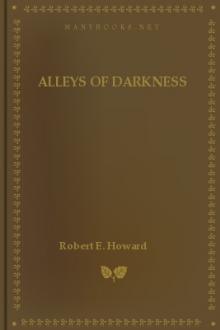A Reasonable Doubt, Susan Sloan [books for 7th graders .txt] 📗

- Author: Susan Sloan
Book online «A Reasonable Doubt, Susan Sloan [books for 7th graders .txt] 📗». Author Susan Sloan
“I wasn’t asked to perform a blood spatter test.” Thurman said.
Lily feigned surprise. “You mean, you were asked to test the defendant’s hands and clothing for gunshot residue, but you weren’t asked to test his hands and clothing for blood spatter?”
“The investigating officers did the GSR test. I simply confirmed their results.”
“Well then, did the investigating officers run a blood spatter test?”
“Not that I’m aware of.”
“So, there was no blood spatter test done by the investigating officers,” Lily clarified, “and you were never asked to run one?”
“Yes. I mean, no.”
“Didn’t that strike you as a little odd?”
“Objection!” John Henry cried. “The personal opinion of the witness is not relevant here.”
“Sustained,” Grace Pelletier declared.
“My apologies, Your Honor, I’ll rephrase,” Lily said. “Mr. Thurman, is it customary, in gun-related homicides, to test for gunshot residue but not for blood spatter?”
“No, they pretty much always go together, unless the shot was fired from such a distance as to render the analysis unnecessary.”
“Will you explain that for the jury?”
“When a bullet is fired into a living thing,” the analyst said, “a certain amount of blood sprays from the entry wound. If the shooter is within a certain distance, some of that blood spray, or spatter as we call it, will deposit on the shooter, or on the shooter’s clothing. If the shooter is beyond that distance, a blood spatter test would be meaningless.”
“And how far away would the shooter have to be,” Lily asked, “for the blood spatter test to be considered meaningless?”
“At least six feet.”
“And how far away from Dale Scott was the person standing who fired the bullet that killed him?”
“Judging from the amount of gunpowder residue at the site of the wound, I would say no more than two feet.”
“So, would you expect that, at that range, the shooter’s clothing would have tested positive for blood spatter?”
“Definitely,” the analyst said.
“And would you consider such a test to be a rather important link in confirming the identity of the shooter?”
“Every link is important. A positive GSR result combined with a positive blood spatter result would pretty much clinch the deal.”
“And yet a blood spatter test wasn’t requested?”
“No, it wasn’t,” Fletcher Thurman confirmed.
“Thank you.” Lily said with emphasis. “I have nothing further.”
. . .
A hurried conversation went on at the prosecution table for a moment before Tom Lickliter rose from his chair.
“Isn’t a positive result for gunshot residue the primary indicator that someone has fired a gun?” he inquired.
“Yes,” the analyst conceded.
“So, do we really need to read a lot into the fact that a blood spatter test wasn’t requested in this case?”
“I was asked if it was an important link, not if it was essential,” Thurman replied.
“Thank you,” the deputy prosecutor said. “I have nothing further.”
. . .
Although she was sorry it had come from the new guy, Lily had been hoping for just such an opening.
“Mr. Thurman,” she said on redirect, “is there any way to get gunshot residue on your hands other than by firing a gun?”
“I suppose if you picked up a gun that had just been fired, that might result in some GSR being deposited on your hands, but it wouldn’t be in the same pattern or amount as if you’d actually fired the gun.”
“And the pattern on Jason Lightfoot’s hands?
“He clearly fired the gun.”
“All right then, is there a way to get gunshot residue on your hands by firing a gun from no more than two feet away, as in the case of Detective Scott, and not get blood spatter on your clothing?”
“I’d have to say no.”
“Hypothetically then, suppose a person fires a gun that kills someone, and then shortly thereafter, that person takes the same gun, wraps someone else’s hands around it, and fires it a second time -- what would be the result?”
Thurman shrugged. “Assuming the gun wasn’t fired close to anything living,” he responded, “the person whose hands were wrapped around the gun would test positive for gunshot residue, but negative for blood spatter.”
“And in that case, would the results of a blood spatter test become even more significant?”
“Certainly.”
“Thank you. Nothing further.”
. . .
Joe was driving west again, heading toward Trent. He had as good as promised Mary Pride that he wouldn’t come back, but he had no choice. One last piece of the puzzle needed to be put in place.
He pulled into the hospital parking lot a little after two-thirty. He didn’t know if she would be there, if she had changed shifts, or if it was her day off. But it didn’t matter -- he knew he would wait all afternoon, all night, all weekend, if he had to. He didn’t have to. At five minutes before three, he spotted her Dodge Ram coming into the lot.
A look of sheer panic flooded her face when she saw him. “I told you,” she cried. “I told you not to come back.”
“I know, and I’m sorry,” he said. “But I had no choice.”
“I can’t do this,” she told him. “I need this job.”
“The file you gave us -- it shed a whole new light on the case,” he said. “But this may mean the difference between Jason living or dying.”
She looked around hurriedly, and then pulled him back between the cars. “All right, what is it?”
“In the file, it says she was brought in by her husband -- did you see him?”
Mary nodded. “Sure, several times. He was actually very nice, and he seemed very concerned about her. It’s hard to believe, sometimes, what people can do to people and then act as if it wasn’t them.”
Joe handed her a photograph. “Is this the guy who brought her in?”
Mary peered at the photo for a moment, and then shook her head. “No, he’s nice looking, for sure, but he’s not the one who came in with her. That one was good-looking, too, but younger, thinner, lighter-haired.”
Joe nodded, and reached into his pocket. He had a hunch, actually one he’d had for a while now, with no way to prove it,





Comments (0)